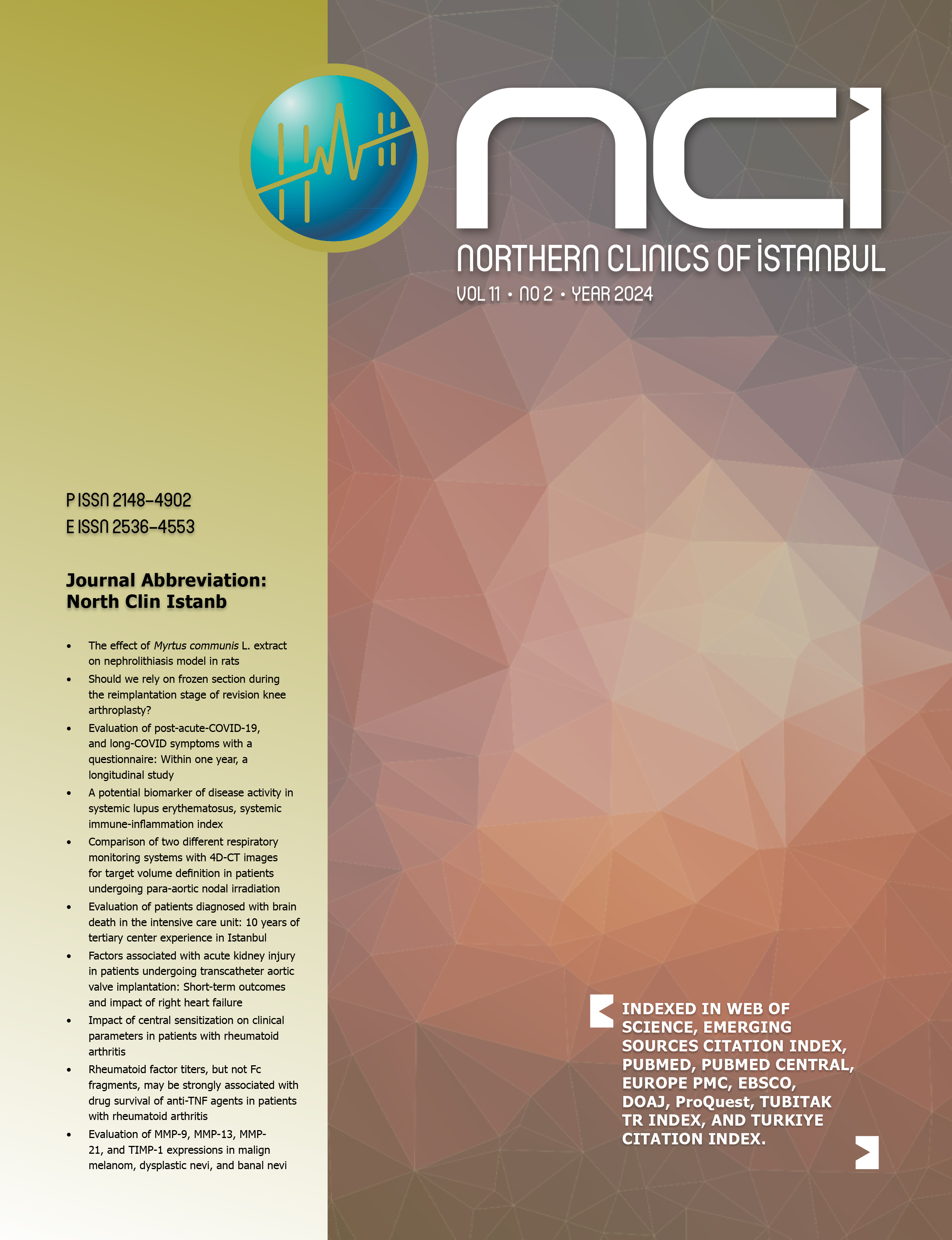Hopelessness and life satisfaction in patients with serious mental disorders: A cross-sectional study
Arzu Yildirim1, Mustafa Akkus2, Rabia Hacihasanoglu Asilar31Division of Psychiatric Nursing, Department of Nursing, Yalova University Faculty of Health Sciences, Yalova, Turkiye2Department of Mental Health and Diseases, Erzincan Binali Yildirim University Faculty of Medicine, Erzincan, Turkiye
3Division of Public Health Nursing, Department of Nursing, Yalova University Faculty of Health Sciences, Yalova, Turkiye
OBJECTIVE: The main purpose of treatment and management in chronic mental disorders is to improve the quality of life (QOL). Hopelessness indicates a significant cognitive vulnerability that is associated with suicide risk. It is important for clinicians to have information about their patients life satisfaction and spirituality. This study was conducted to determine hopelessness and life satisfaction in patients who received service from a community mental health center (CMHC).
METHODS: This cross-sectional study was conducted with patients diagnosed with psychosis (n=66) and bipolar disorder (n=24) according to Diagnostic and Statistical Manual of Mental Disorders-5 (DSM-5) criteria, at a community mental health center serving in a hospital located in eastern Turkiye. Data was collected by a psychiatrist between January and May 2019 with face-to-face interviews, using a questionnaire, Beck Hopelessness Scale (BHS) and Satisfaction with Life Scale (SWLS).
RESULTS: In the study, it was found that the mean BHS and SWLS scores of the patients did not differ significantly between the diagnosis groups (p>0.05). A moderately negative correlation was found between the patients mean BHS and SWLS scores (rs=-0.450, p<0.001). In addition, it was determined that the hopelessness level of the secondary school graduates was low (p<0.05), the mean BHS score increased as the age and time from diagnosis of the patients increased (p<0.001), and there was a low negative correlation between the time from diagnosis and the mean SWLS score (rs: -0.208; p<0.05).
CONCLUSION: In this study, it was found that the hopelessness level of the patients was low, their life satisfaction was moderate, and as the hopelessness level increased, their life satisfaction decreased. In addition, it was determined that the hopelessness and life satisfaction levels of the patients did not differ by to the diagnosis groups. It is extremely important for mental health professionals to consider aspects such as hope and life satisfaction, which are key in the recovery of patients.
Keywords: Hopelessness, life satisfaction, serious mental disorder.
Ciddi ruhsal bozukluğu olan hastalarda umutsuzluk ve yaşam doyumu: Kesitsel bir çalışma
Arzu Yildirim1, Mustafa Akkus2, Rabia Hacihasanoglu Asilar31Yalova Üniversitesi, Sağlık Bilimleri Fakültesi, Hemşirelik Bölümü, Psikiyatri Hemşireliği Anabilim Dalı, Yalova2Erzincan Binali Yıldırım Üniversitesi, Tıp Fakültesi, Ruh Sağlığı ve Hastalıkları Anabilim Dalı, Erzincan
3Yalova Üniversitesi, Sağlık Bilimleri Fakültesi, Halk Sağlığı Hemşireliği, Yalova
AMAÇ: Kronik ruhsal bozukluklarda tedavi ve yönetimin temel amacı yaşam kalitesini iyileştirmektir. Umutsuzluk, intihar riskiyle ilişkili önemli bir bilişsel incinebilirliği gösterir. Klinisyenlerin hastalarının yaşam doyumu ve maneviyatı hakkında bilgi sahibi olmaları önemlidir. Bu çalışma, bir toplum ruh sağlığı merkezinden hizmet alan hastalarda umutsuzluk ve yaşam doyumunu belirlemek amacıyla yapıldı.
GEREÇ VE YÖNTEM: Kesitsel türde olan araştırma, Türkiye'nin doğusunda bulunan bir hastanenin bünyesinde hizmet veren toplum ruh sağlığı merkezinde DSM-5 ölçütlerine göre psikoz (n=66) ve bipolar bozukluk (n=24) tanısı alan hastalar ile yürütüldü. Veriler Ocak-Mayıs 2019 tarihleri arasında bir psikiyatri uzmanı tarafından soru formu, Beck Umutsuzluk Ölçeği (BUÖ) ve Yaşam Doyumu Ölçeği (YDÖ) kullanılarak yüz yüze görüşme yöntemi ile toplandı.
BULGULAR: Çalışmada Hastaların BUÖ ve YDÖ puan ortalamasının tanı grupları arasında anlamlı fark oluşturmadığı bulundu (p>0.05). Hastaların BUÖ ve YDÖ puan ortalaması arasında negatif yönde orta düzeyde ilişki bulundu (rs= -0.450, p<0.001). Ayrıca ortaokul mezunu olanların umutsuzluk düzeyinin düşük olduğu (p<0.05), hastaların yaşı ve tanı süresi arttıkça BUÖ puan ortalamasının arttığı (p<0.001), tanı süresi ile YDÖ puan ortalaması arasında ise negatif yönde düşük düzeyde bir ilişki olduğu belirlendi (rs: -0.208; p<0.05).
SONUÇ: Bu çalışmada hastaların umutsuzluk düzeyinin düşük, yaşam doyumlarının orta düzeyde olduğu, umutsuzluk düzeyi arttıkça yaşam doyumlarının azaldığı bulundu. Ayrıca tanı gruplarına göre hastaların umutsuzluk ve yaşam doyumu düzeylerinin farklılaşmadığı belirlendi. Ruh sağlığı profesyonelleri hastaların iyileşmesinde temel olan umut ve yaşam doyumu gibi hususları dikkate almaları son derece önemlidir. (NCI-2022-6-22)
Anahtar Kelimeler: Umutsuzluk, yaşam doyumu, ciddi ruhsal bozukluk.
Manuscript Language: English





















